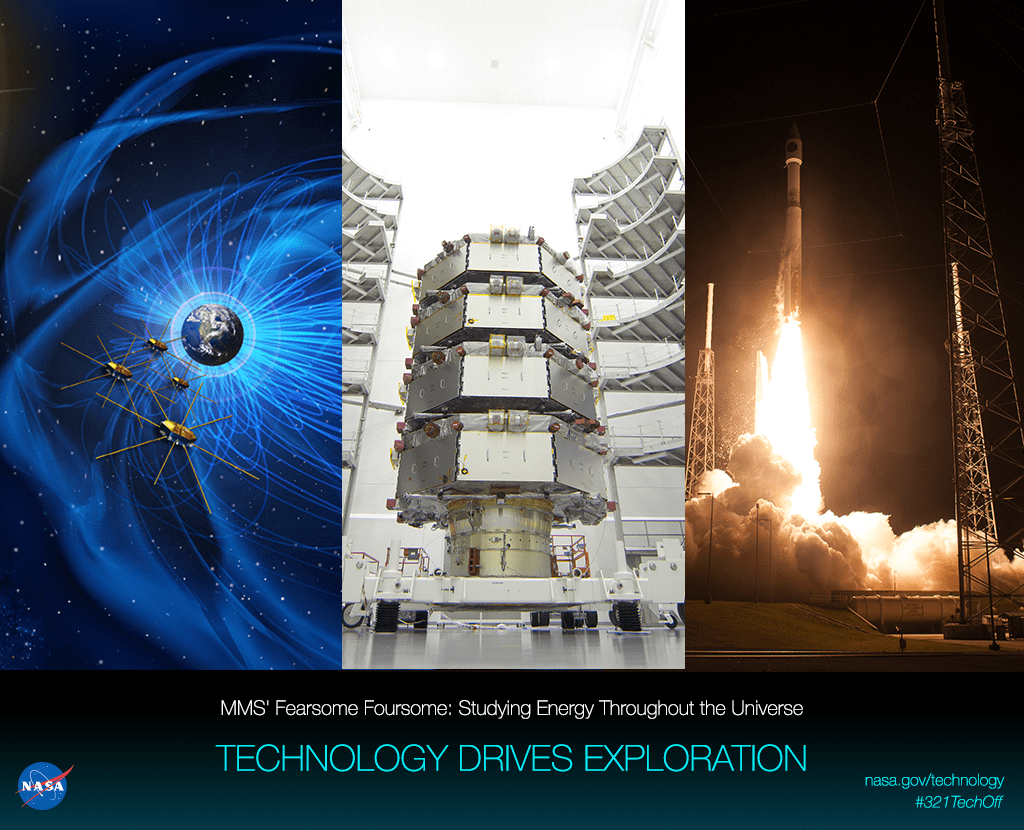The Magnetospheric Multiscale, or MMS, mission studies the mystery of how magnetic fields around Earth connect and disconnect, explosively releasing energy via a process known a magnetic reconnection. MMS consists of four identical spacecraft each carrying 25 sensors with unprecedented observational speeds that work together to provide the first three-dimensional view of this fundamental process, which occurs throughout the universe.
The MMS spacecraft launched and deployed successfully from a United Launch Alliance Atlas V rocket on March 12, 2015. The four octagonal disc-shaped components are flying in pyramid formation through space to take unprecedented measurements of magnetic reconnection as it occurs in different areas of Earth’s magnetosphere. The spacecraft will fly the first phase of the mission in an elliptical orbit that is 1,600 miles above Earth at its closest approach and at its farthest, reaches out more than 43,000 miles from the planet. After a year-and-a-half in that orbit, the MMS formation will take its orbit out to 95,000 miles, almost halfway to the moon.
This mission features breakthrough technology by way of its data collection instrumentation and new, extremely sensitive GPS navigation equipment. MMS observations will help scientists gain a better understanding of space weather. Understanding magnetic reconnection can also help provide better and cleaner energy production on Earth because fusion reactors are limited by the way magnetic fields behave. For more information, go to www.nasa/gov/mms.




























